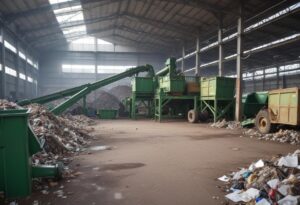Bhadla Solar Park: A Beacon of Renewable Energy in Rajasthan
**Introduction**
Bhadla Solar Park, located in the Jodhpur district of Rajasthan, India, stands as a testament to the nation’s commitment to harnessing renewable energy sources. Spanning over 14,000 acres in the arid Thar Desert, this solar park is one of the largest in the world, reflecting India’s ambitious goals in renewable energy development.
**Progress and Milestones**
The development of Bhadla Solar Park began in 2015, with the goal of creating a massive solar power generation hub. As of 2024, the park has achieved significant milestones, with a current installed capacity of around 2,245 MW. The commissioning of the various phases of the solar park has been a phased process:
– **Phase I**: Commissioned in March 2017, contributing 420 MW.
– **Phase II**: Added an additional 250 MW by March 2018.
– **Phase III and IV**: These phases collectively added over 1,575 MW by 2020.
**Electricity Generation and Benefits**
Bhadla Solar Park has been instrumental in contributing to India’s grid, significantly boosting the country’s solar power capacity. The electricity generated from the park is transmitted to various regions and cities, particularly benefiting the states of Rajasthan, Gujarat, and Maharashtra. The abundant solar energy harnessed here helps in reducing the dependency on fossil fuels and aids in meeting the growing energy demands sustainably.
**Impact on Local and Regional Development**
The establishment of Bhadla Solar Park has had far-reaching impacts on the local economy and the environment. The project has created numerous job opportunities in the construction and maintenance sectors, significantly improving the livelihoods of the local populace. Additionally, the solar park has positioned Rajasthan as a leader in renewable energy, attracting further investments and fostering the growth of green technology in the region.
**Environmental and Economic Benefits**
The environmental benefits of Bhadla Solar Park are substantial. By generating clean energy, the park helps in reducing carbon emissions, contributing to global efforts to combat climate change. Economically, the project has reduced energy costs and improved energy security, making it a pivotal part of India’s energy strategy.
**Future Prospects**
Looking forward, Bhadla Solar Park is expected to expand further, with plans to increase its capacity to meet the rising demand for clean energy. The ongoing advancements in solar technology and storage solutions will likely enhance the efficiency and output of the park, solidifying its role as a cornerstone of India’s renewable energy infrastructure.
**Conclusion**
Bhadla Solar Park is more than just a solar farm; it is a symbol of India’s green energy revolution. The progress made in harnessing solar energy at Bhadla not only provides a sustainable energy source for millions but also sets a benchmark for future renewable energy projects globally. The successful implementation and operation of this solar park underscore India’s potential and commitment to a sustainable and environmentally friendly energy future.
—
**Sources:**
– [Mercom India](https://mercomindia.com)
– [The Economic Times](https://economictimes.indiatimes.com)
– [Government of Rajasthan Renewable Energy Policy](https://energy.rajasthan.gov.in)
– [Energyworld.com](https://energy.economictimes.indiatimes.com)
Firstly, from a cost-effectiveness perspective, investing in cycle tracks is notably cheaper compared to constructing and maintaining roads for motor vehicles. The relatively low cost of implementing and maintaining cycle lanes makes them an economically viable solution for urban transportation infrastructure.
Moreover, the easy availability of cycle tracks at strategic locations within cities offers citizens a convenient and accessible alternative mode of transportation. By integrating cycle lanes into urban planning, cities can ensure that they are seamlessly connected to key destinations such as residential areas, commercial centers, and public transportation hubs. This accessibility encourages more people to adopt cycling as a viable means of commuting, thereby reducing dependency on motor vehicles and mitigating traffic congestion.
Furthermore, the emphasis on cycling infrastructure aligns with environmental sustainability goals. Cycling is inherently eco-friendly, producing zero emissions and requiring minimal resources compared to motorized transportation. By promoting cycling as a mode of urban travel, cities can contribute to reducing air pollution, greenhouse gas emissions, and overall environmental degradation.
Additionally, the health benefits associated with cycling are considerable. Encouraging citizens to cycle for their daily commute or leisure activities promotes physical activity and helps combat sedentary lifestyles, thereby reducing the prevalence of lifestyle-related diseases such as obesity, diabetes, and cardiovascular ailments. Cycling also offers mental health benefits by reducing stress levels and improving overall well-being.
In summary, the development of cycle tracks in smart cities in India represents a multifaceted approach towards enhancing urban mobility, sustainability, and citizen welfare. By prioritizing cost-effectiveness, accessibility, environmental friendliness, and health benefits, these initiatives underscore the transformative potential of smart mobility projects in fostering inclusive and livable urban environments.
- Fur-Ever Friends Boutique: Tail-Wagging Treasures
- Critter Comforts and Beyond: Exploring the Expansive World of Pet Shops
- Paws, Claws, and Beyond: Navigating the Vast Realm of Pet Store Wonders




